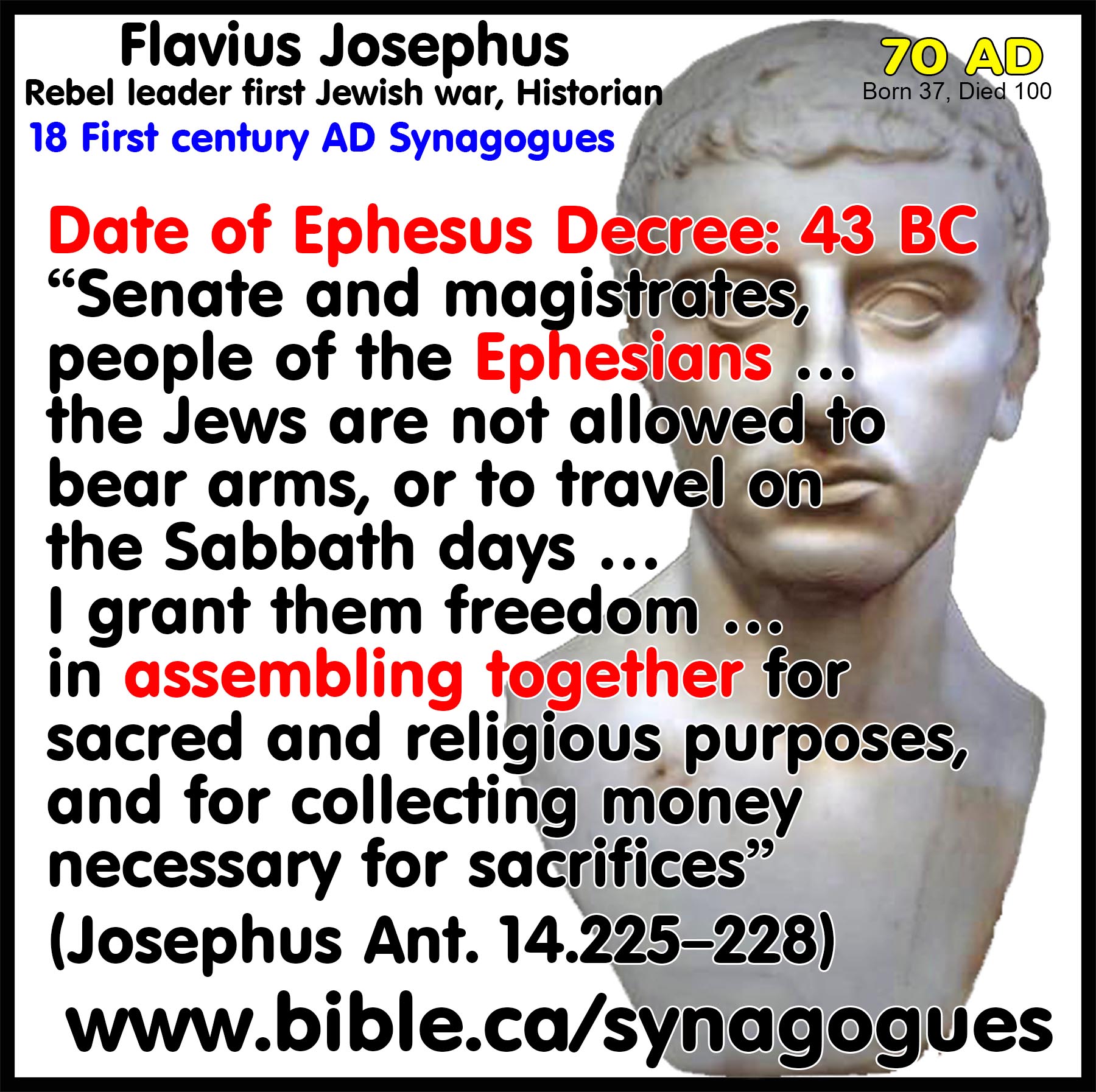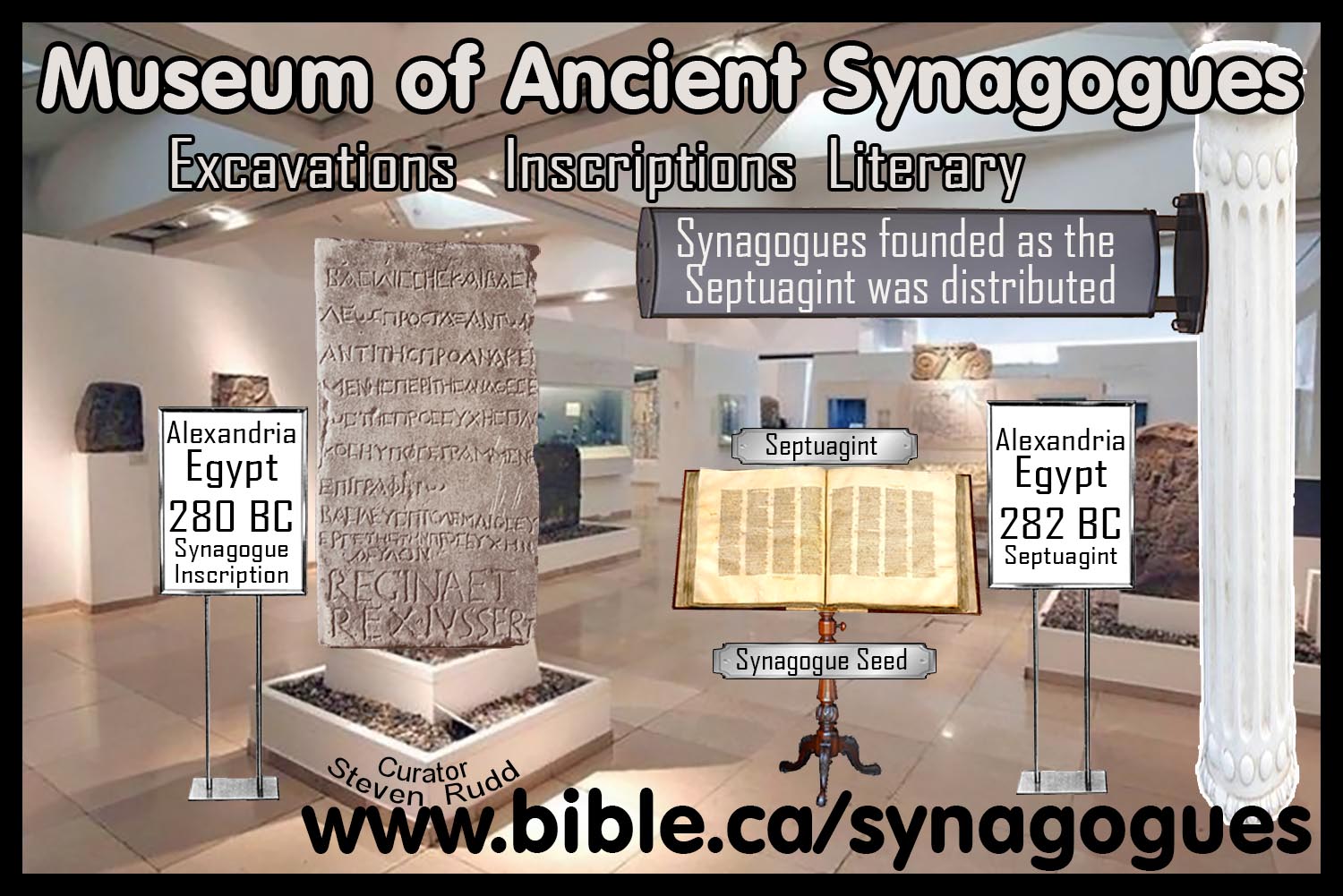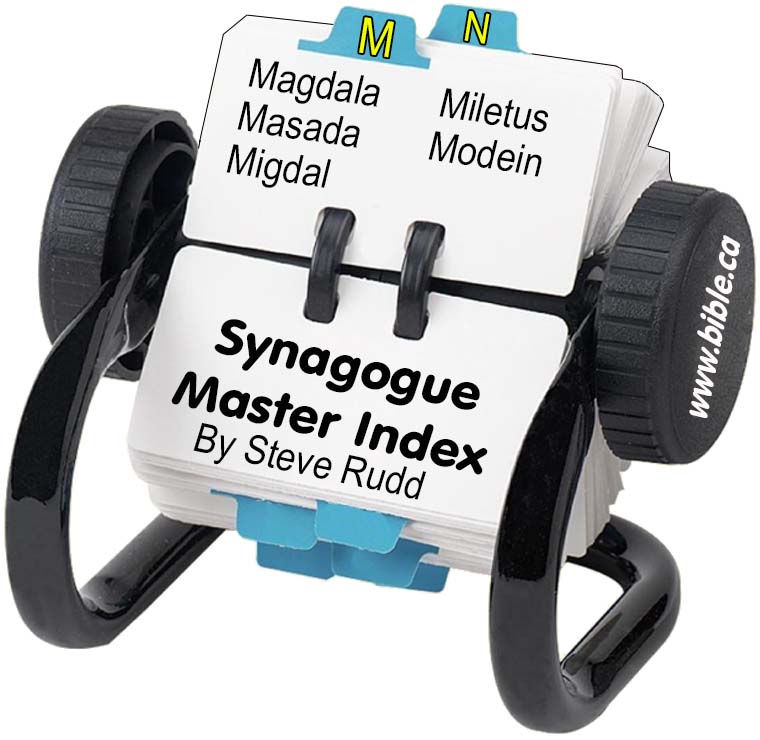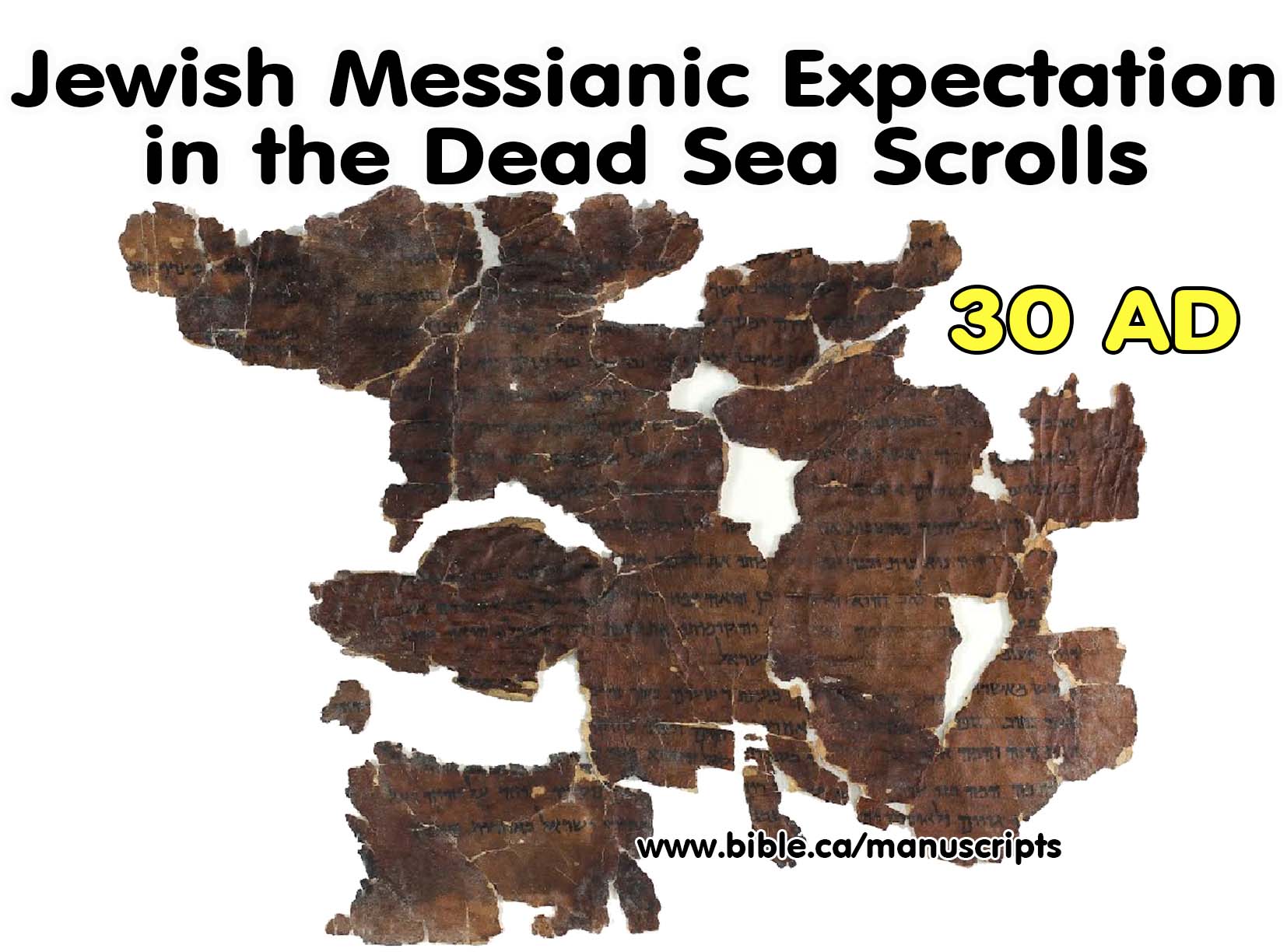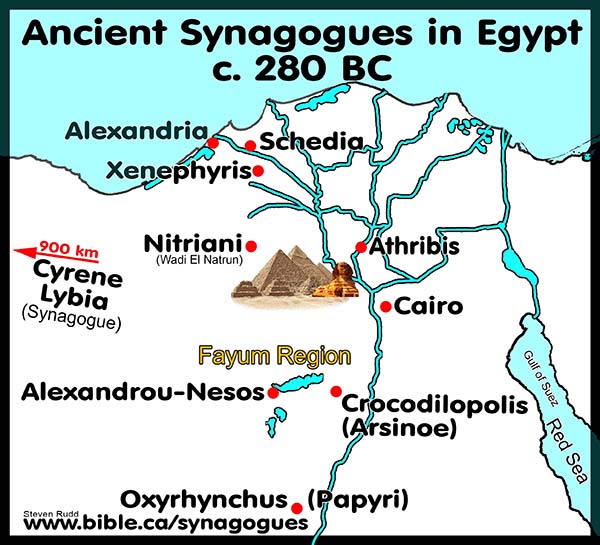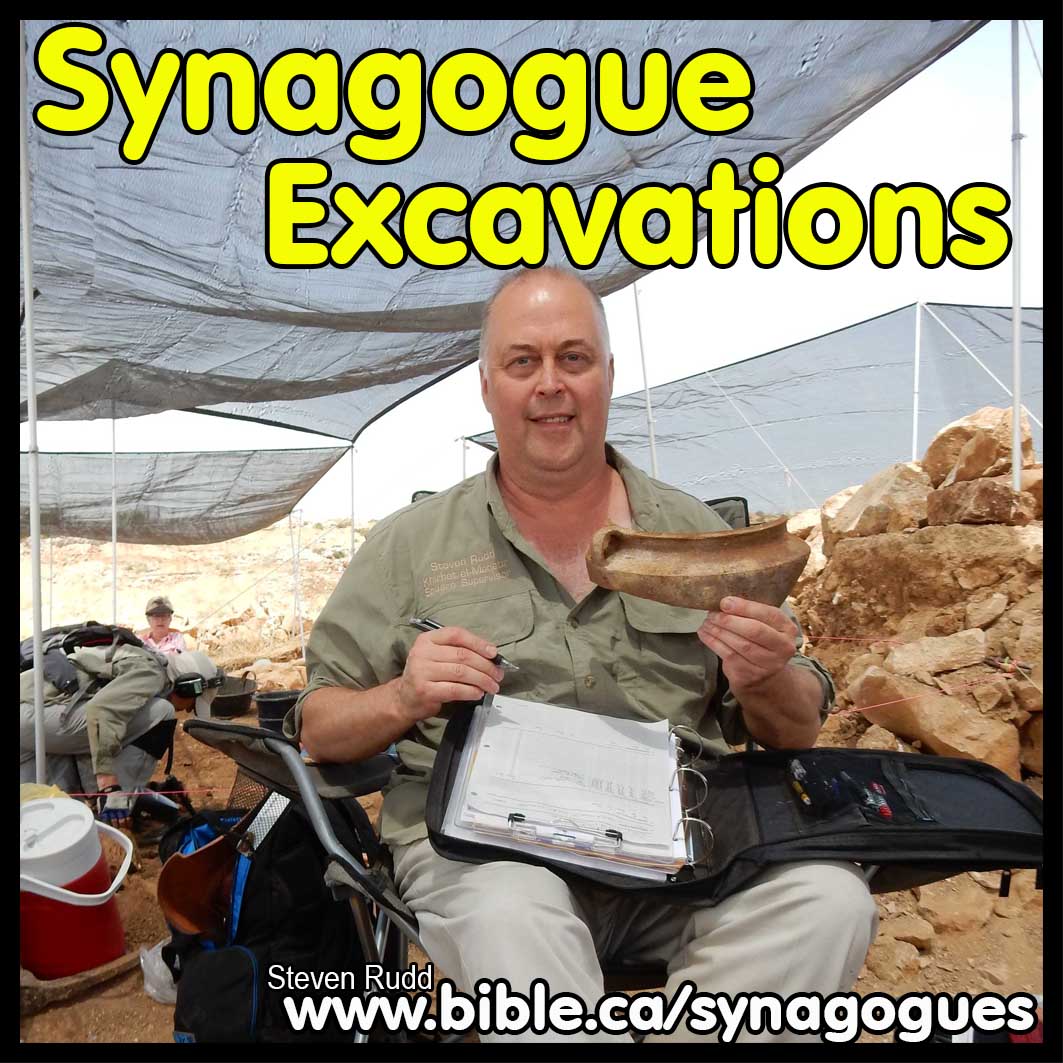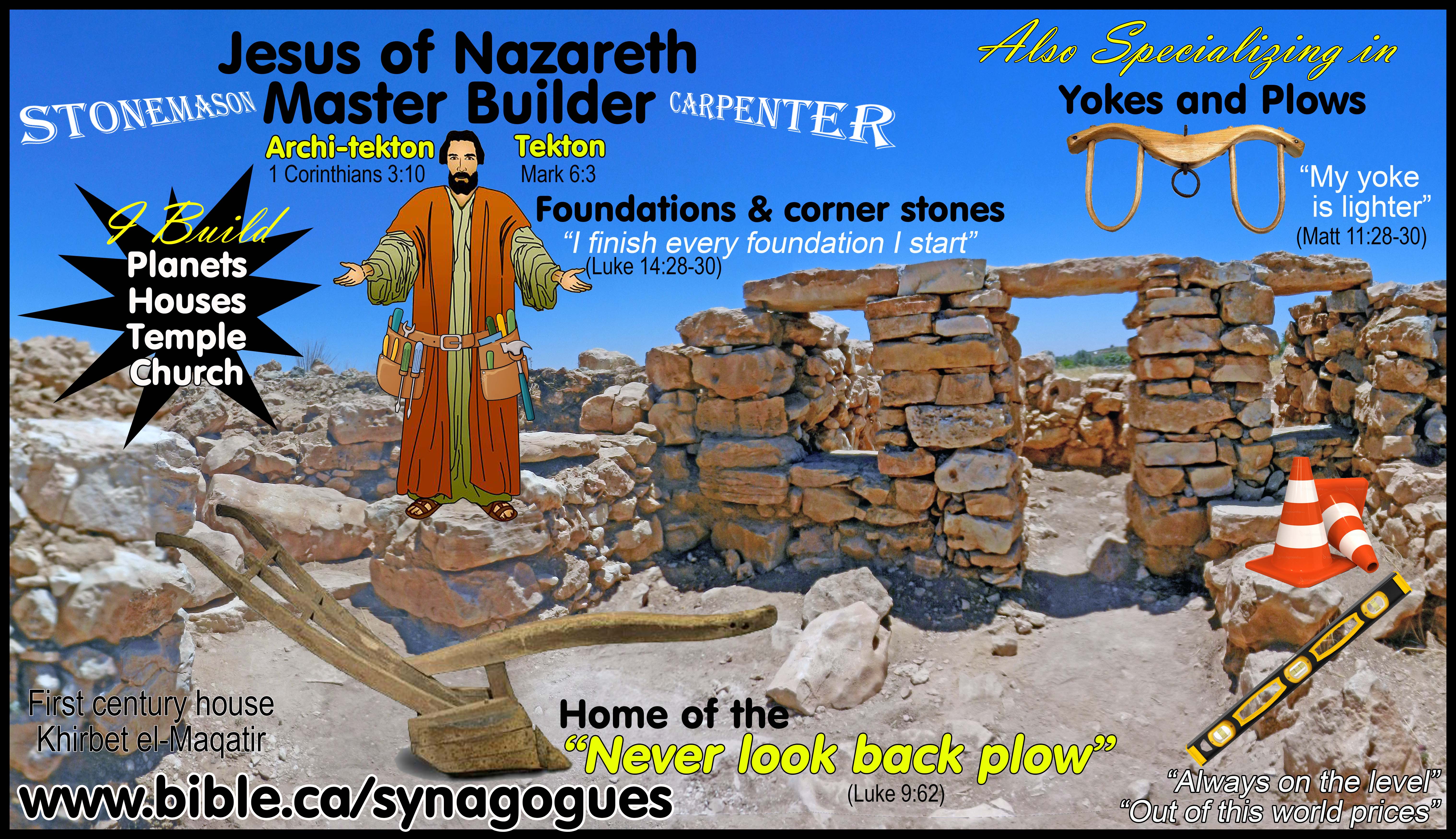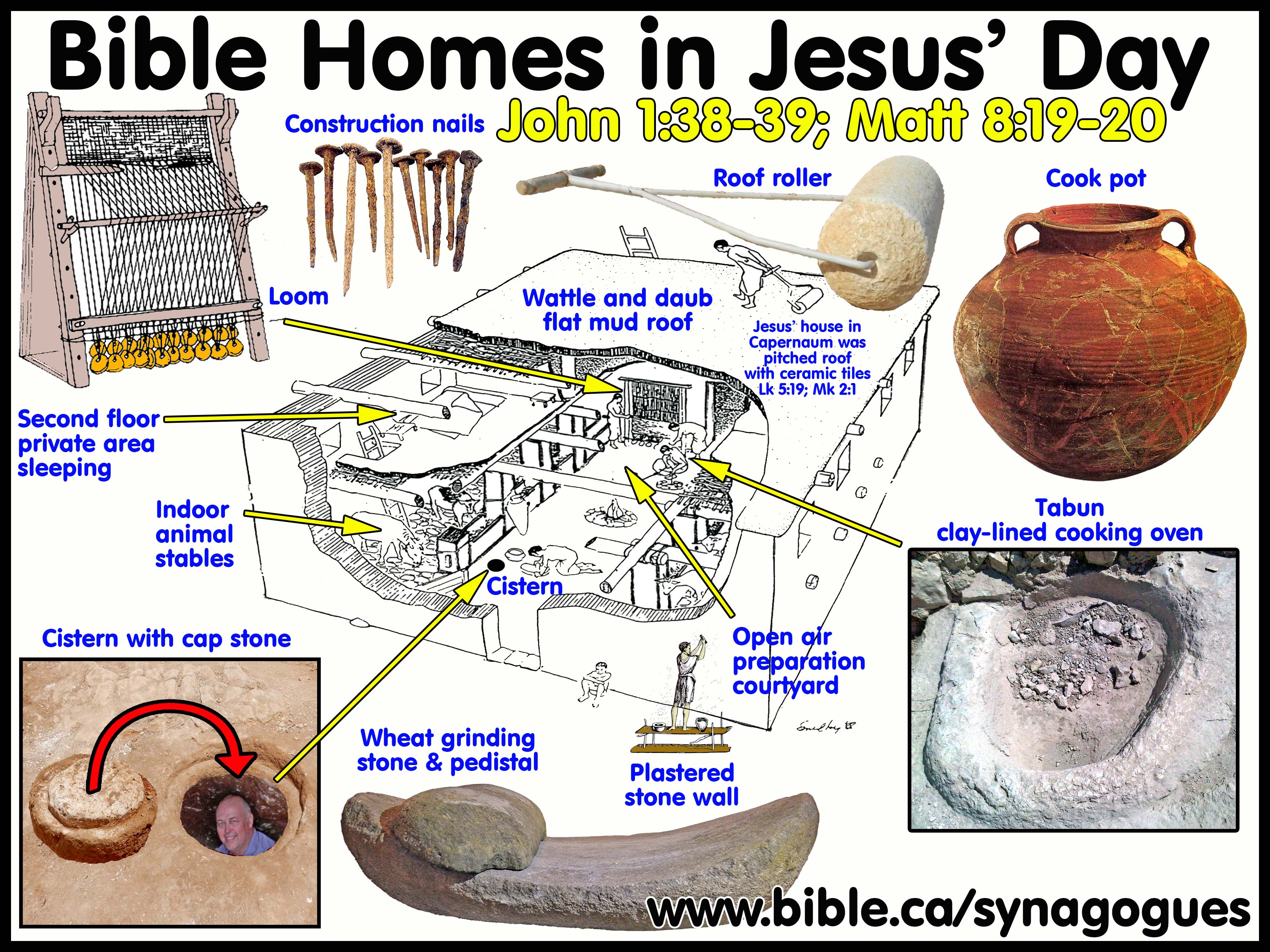Ancient Synagogue Literary Sources
Ancient synagogues of the Bible: Ephesus Synagogue: 43 BC
Discussion:
1. “Literary sources only”:
a. No Synagogue has been located or excavated in Ephesus.
b. No Ephesus synagogue inscriptions have ever been found.
2. Literary source #1: The infallible, inspired and historically inerrant NEW TESTAMENT
a. Paul’s First missionary journey: "They came to Ephesus, and he left them there. Now he himself entered the synagogue and reasoned with the Jews. When they asked him to stay for a longer time, he did not consent, but taking leave of them and saying, “I will return to you again if God wills,” he set sail from Ephesus." (Acts 18:19–21)
b. Paul’s Second missionary journey: "Now a Jew named Apollos, an Alexandrian by birth, an eloquent man, came to Ephesus; and he was mighty in the Scriptures. This man had been instructed in the way of the Lord; and being fervent in spirit, he was speaking and teaching accurately the things concerning Jesus, being acquainted only with the baptism of John; and he began to speak out boldly in the synagogue. But when Priscilla and Aquila heard him, they took him aside and explained to him the way of God more accurately. And when he wanted to go across to Achaia, the brethren encouraged him and wrote to the disciples to welcome him; and when he had arrived, he greatly helped those who had believed through grace, for he powerfully refuted the Jews in public, demonstrating by the Scriptures that Jesus was the Christ." (Acts 18:24–28)
c. Paul’s Second missionary journey: "And he entered the synagogue and continued speaking out boldly for three months, reasoning and persuading them about the kingdom of God. But when some were becoming hardened and disobedient, speaking evil of the Way before the people, he withdrew from them and took away the disciples, reasoning daily in the school of Tyrannus. This took place for two years, so that all who lived in Asia heard the word of the Lord, both Jews and Greeks." (Acts 19:8–10)
3. Literary source #2: Philo: 50 AD
a. “Caius Norbanus Flaccus, proconsul, to the governors of the Ephesians, greeting. “’Caesar has written word to me, that the Jews, wherever they are, are accustomed to assemble [greek: synago] together, in compliance with a peculiar ancient custom of their nation, to contribute money which they send to Jerusalem; and he does not choose that they should have any hindrance offered to them, to prevent them from doing this; therefore I have written to you, that you may know that I command that they shall be allowed to do these things.’” (Philo, Embassy 315)
4. Literary source #3: Josephus: 70 AD
a. “When Artemon was prytanis, on the first day of the month Leneon, Dolabella imperator, to the senate and magistrates, and people of the Ephesians, sendeth greeting. (226) Alexander, the son of Theodorus, the ambassador of Hyrcanus, the son of Alexander the high priest and ethnarch of the Jews, appeared before me, to show that his countrymen could not go into their armies, because they are not allowed to bear arms, or to travel on the Sabbath days, nor there to procure themselves those sorts of food which they have been used to eat from the times of their forefathers,—(227) I do therefore grant them a freedom from going into the army, as the former prefects have done, and permit them to use the customs of their forefathers, in assembling together for sacred and religious purposes, as their law requires, and for collecting oblations necessary for sacrifices; and my will is, that you write this to the several cities under your jurisdiction.” 13. (228) And these were the concessions that Dolabella made to our nation when Hyrcanus sent an embassage to him; but Lucius the consul’s decree ran thus:—“I have at my tribunal set these Jews, who are citizens of Rome, and follow the Jewish religious rites, and yet live at Ephesus, free from going into the army, on account of the superstition they are under.” (Josephus Antiquities 14.225–228, decree: 43 BC)
b. Summary: “senate and magistrates, people of the Ephesians …the Jews are not allowed to bear arms, or to travel on the Sabbath days … I do therefore grant them a freedom … in assembling together for sacred and religious purposes, and for collecting money necessary for sacrifices” (Josephus Antiquities 14.225–228, decree: 43 BC)
c. “Agrippa also did himself write, after the manner following, on behalf of the Jews:— “Agrippa, to the magistrates, senate, and people of the Ephesians, sendeth greeting. I will that the care and custody of the sacred money that is carried to the temple at Jerusalem be left to the Jews of Asia, to do with it according to their ancient custom; (168) and that such as steal that sacred money of the Jews, and fly to a sanctuary, shall be taken thence and delivered to the Jews, by the same law that sacrilegious persons are taken thence. I have also written to Sylvanus the praetor, that no one compel the Jews to come before a judge on the Sabbath day.” (Josephus, Antiquities 16.167-168)
a. “Certainly, in his decree forbidding the theft of sacred books and sacred money, Augustus treated the Jewish houses of prayer like temples - in the ancient world , money in temples was supposed to be inviolate. Agrippa 's order to Ephesus, in the same collection of decrees, states that men who steal the sacred money of the Jews and take refuge in places of asylum may be dragged out and turned over to the Jews, thus being treated in the same way as were temple robbers.” (Common Judaism and the Synagogue in the First Century, E. P Sanders, p6)
5. We can be 100% certain there was a second temple synagogue at Ephesus in spite of finding zero archeological evidence to support it. Five references from three different literary sources is more than sufficient.
By Steve Rudd 2017: Contact the author for comments, input or corrections
|
Jesus your messiah is waiting for you to come home! |
|
|
Why not worship with a first century New Testament church near you, that has the same look and feel as the Jewish Synagogue in your own home town. As a Jew, you will find the transition as easy today as it was for the tens of thousands of your forefathers living in Jerusalem 2000 years ago when they believed in Jesus the Nazarene (the branch) as their messiah. It’s time to come home! |
|
By Steve Rudd: Contact the author for comments, input or corrections.
Go to: Main Ancient Synagogue Start Page
